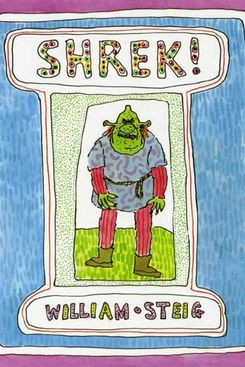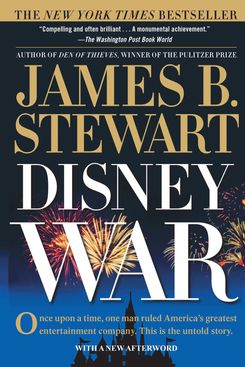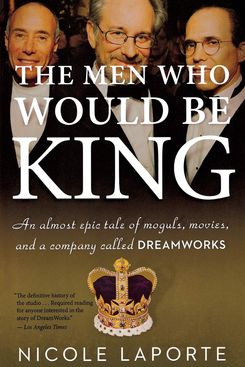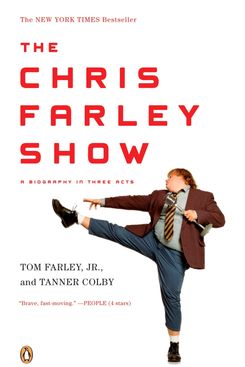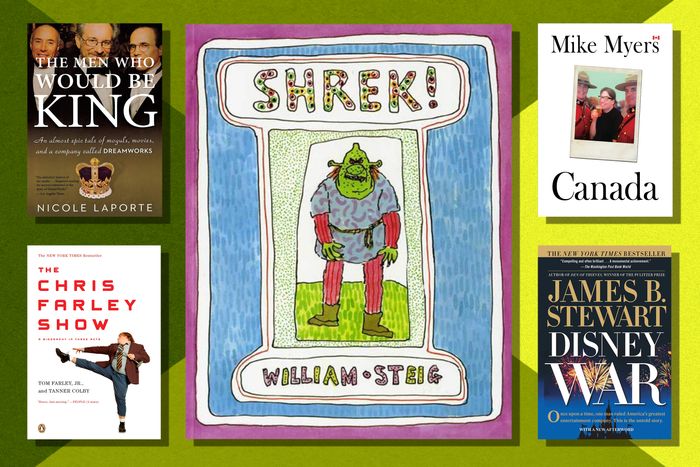
Some jerk in the Bible once said, “When I was a child, I spoke as a child, I understood as a child, I thought as a child: but when I became a man, I put away childish things.” That’s no way to live — some childish things bring completely new delights and insights when revisited as an adult. Shrek, for example, is a 20-year-old text that unlocks the entire history of 21st-century entertainment when examined correctly. The making of Shrek was the unmaking of traditional, Disney-style animation. It’s the story of how the fallout between two men, Michael Eisner and Jeffrey Katzenberg, would change media forever. Shrek came about because Katzenberg left Disney. If Katzenberg had stayed at Disney, Bob Iger wouldn’t have been in the No. 2 position. If Bob Iger hadn’t taken over for Eisner after he lost his mojo, Disney never would have bought every other studio in existence. Shrek is one domino between “A guy draws a mouse” and “the same company owns Star Wars, Marvel, and The Simpsons.” A smaller domino after that one is labeled “Quibi,” but we can set that aside for the moment.
To best understand the cultural significance of Shrek, and to revisit the franchise as an adult, you have to do your research. My personal Shreksperience began recently with the Podcast: The Ride episode about Shrek 4-D, which argues that Shrek might mark the cultural end of the 20th century because it so thoroughly tore down one of the era’s most enduring story types — the Disney fairy tale. From there, I found myself compelled to do some deep reading while constructing an elaborate conspiracy board with bits of red string connecting Michael Eisner to Pierre Trudeau to the death of Chris Farley. Because, folks, it’s all connected, and the Rube Goldberg machine of pop culture, power struggles, and corporate politics all helped to make Shrek what it is today.
The original children’s book that started it all, Shrek! by William Stieg has next to nothing to do with the movie that won the first Academy Award for Best Animated Film. Book Shrek has laser vision, blood that would poison a snake, and nasty parents that love him very much in their “stinky is good” way. Shrek is almost a superhero of being nasty: He grosses out thunder, burps lighting, etc. This was the book Steven Spielberg optioned back in 1991, with thoughts of Bill Murray as Shrek and Steve Martin as Donkey. It’s a Shrek devoid of his future onionlike layers.
To fully understand Shrek one must understand DreamWorks, and to understand DreamWorks, one must understand the enmity between onetime Disney co-workers Jeffrey Katzenberg and Michael Eisner. DisneyWar is a hefty tome about the modern era of a company that has come to own the majority of pop culture. By cataloging the rise and fall of Eisner at the company, Stewart neatly explains why a studio like DreamWorks turned out the way it did (tl;dr: Eisner ascended to power, Katzenberg was forced to resign, and things … escalated from there). It also explains why Bob Iger went acquisition-happy after he took the reins following Eisner’s unceremonious ouster.
Katzenberg’s tenure at DreamWorks was defined by how things ended with Disney. He worked closely with PDI (the company that would become DreamWorks Animation) because of how Eisner torpedoed the relationship with Pixar. He crammed Shrek full of stars because Eisner was so averse to paying for big names at Disney. And the mercurial Lord Farquad wouldn’t have such a square jaw and prominent browline without Katzenberg developing such vitriol for his former boss. For that and more, DisneyWar proves a hugely juicy book. The bitter lawsuit between Katzenberg and Disney provided ample tell-all fodder, as well as some hard-hitting direct quotations lifted straight from the court transcripts.
While DisneyWar documents the rise and fall of Michael Eisner, it only serves as Katzenberg’s Act One. Those looking for his fall will find it well-documented in The Men Who Would Be King. LaPorte tells a tale of monumental hubris from three men who seemed to never lose — until they lost. Steven Spielberg, Jeffrey Katzenberg, and David Geffen joined forces to paint over any structural flaws at their company with a thick coat of prestige. For a while, it worked: Shrek premiered at Cannes, saved DreamWorks, and changed animation forever.
The Men Who Would Be King is the book that deals most closely with the actual production of Shrek. It explains how a property could languish under Steven Spielberg’s ownership for years, like Shrek did. Apparently Spielberg likes to bench IP, and strung along Shrek for years like Mr. Sheffield did to Fran on The Nanny. Working on Shrek was referred to as “the gulag” at PDI — when you messed up on The Prince of Egypt, you were punished by “getting Shreked” (translation: forced to slave away on the project no one thought would work).
But somehow the film got made. PDI’s location in the Bay Area might have helped, as it meant Katzenberg wasn’t able to micromanage from several counties away. Eventually, though, Shrek became a wrestling match for control between Katzenberg and co-director Andrew Adamson. Adamson helped the animators feel ownership of their creations, down to casting them as secondary characters. Katzenberg found big stars to take the main roles. Between cute “casting your friends” energy and star power taking over animation, there is hardly room for old school voice over actors in feature films today. That’s Shrek’s fault.
The majority of Farley’s Shrek performance had been recorded when he died, and what you get from his take is an ogre who truly believes he is unlovable. Myers’ Shrek is diffident, slow to warm; Farley is a Shrek that doesn’t think he’s good enough. It was also a big part of the Farley version of Shrek (heavily re-inserted into the Broadway musical adaptation of Shrek) that the ogre had parental issues. In Stieg’s book, Shrek is literally kicked out of his home by his folks, but it’s not traumatic; it seems to just be the ogre way. Farley’s Shrek and Musical Shrek were kicked out at a younger age than Stieg’s version, and it’s implied to be the reason why the ogre is so defensive as an adult. The parallels are all over the text of this oral history. Chris Farley lived (and in some ways, died) imitating his two biggest heroes: John Belushi, and his own father.
Mike Myers famously recorded his Shrek performance first with a voice similar to his Lothar of the Hill People character, but eventually convinced Katzenberg to let him re-record with the Scottish brogue we know today. Some people claim that Shrek’s Scottish vibe is too similar to Fat Bastard or to the Scottish guy in So I Married an Axe Murderer, both of whom Myers plays. However, in Canada, Myers recounts how Phil Hartman only believed he had 11 guys he could play. What’s more, he numbered them each and made a whole notation system for emotional inflection and intensity. Myers also talks about the first time he used the Scottish accent to his advantage, pretending to be Scottish for an entire night while touring with Second City. (Other than that, the Shrek details are scant. We get a story about how Myers’ never truly felt famous until after the film was out, but Canada is mostly about, well, Canada.)
Myers’s memoir is many things: a recounting of his Toronto boyhood, a history lesson for ignorant Americans. Mostly it’s a love letter to Pierre Trudeau. That dude is obsessed. But it isn’t a behind-the-scenes look at the making of any of the four Shrek movies. It’s a fun, unique read nevertheless. No other celeb memoir has a picture of the dead body of deputy prime minister of Québec Pierre Laporte. Though God knows Guy Branum must have tried.



